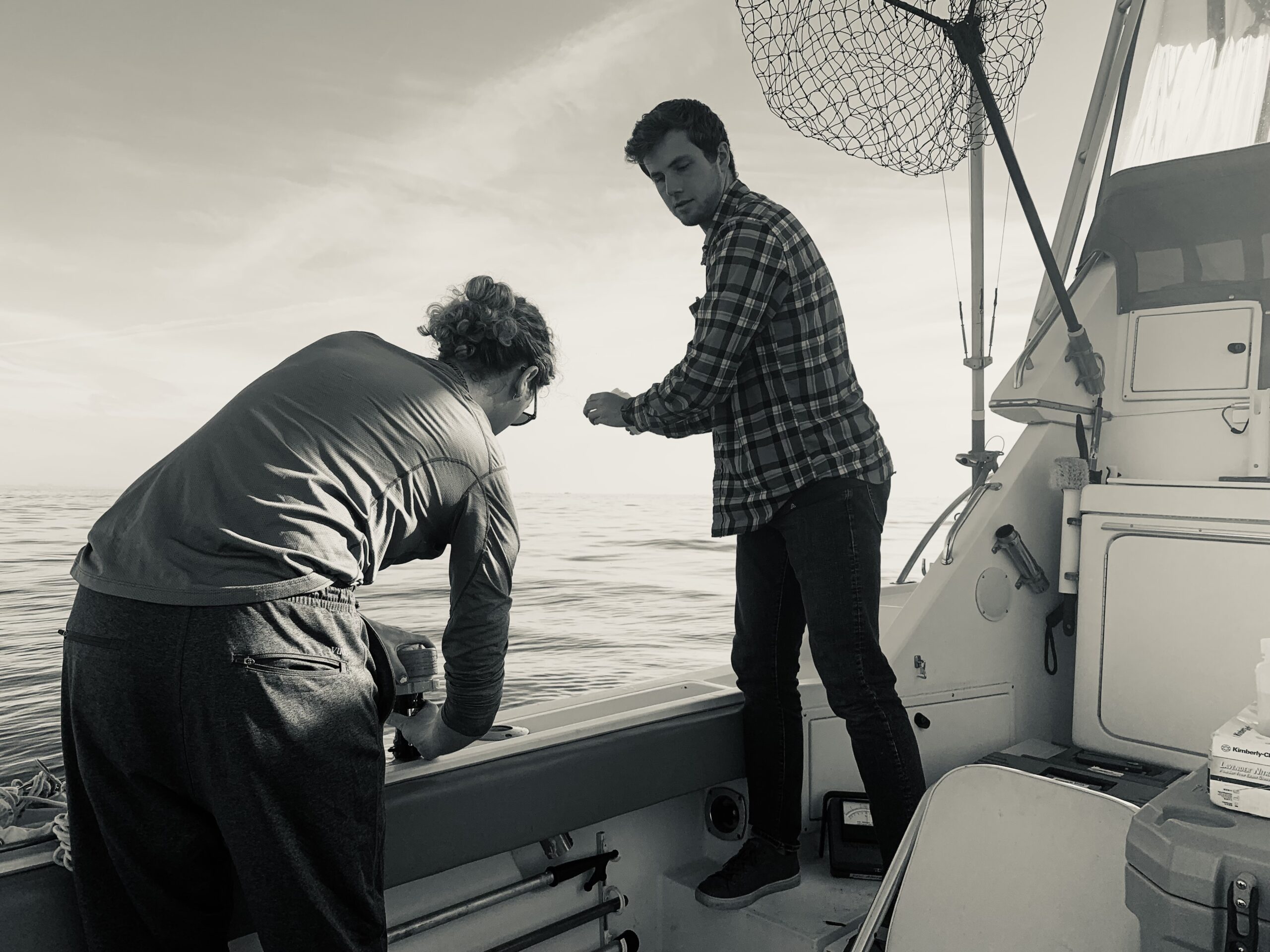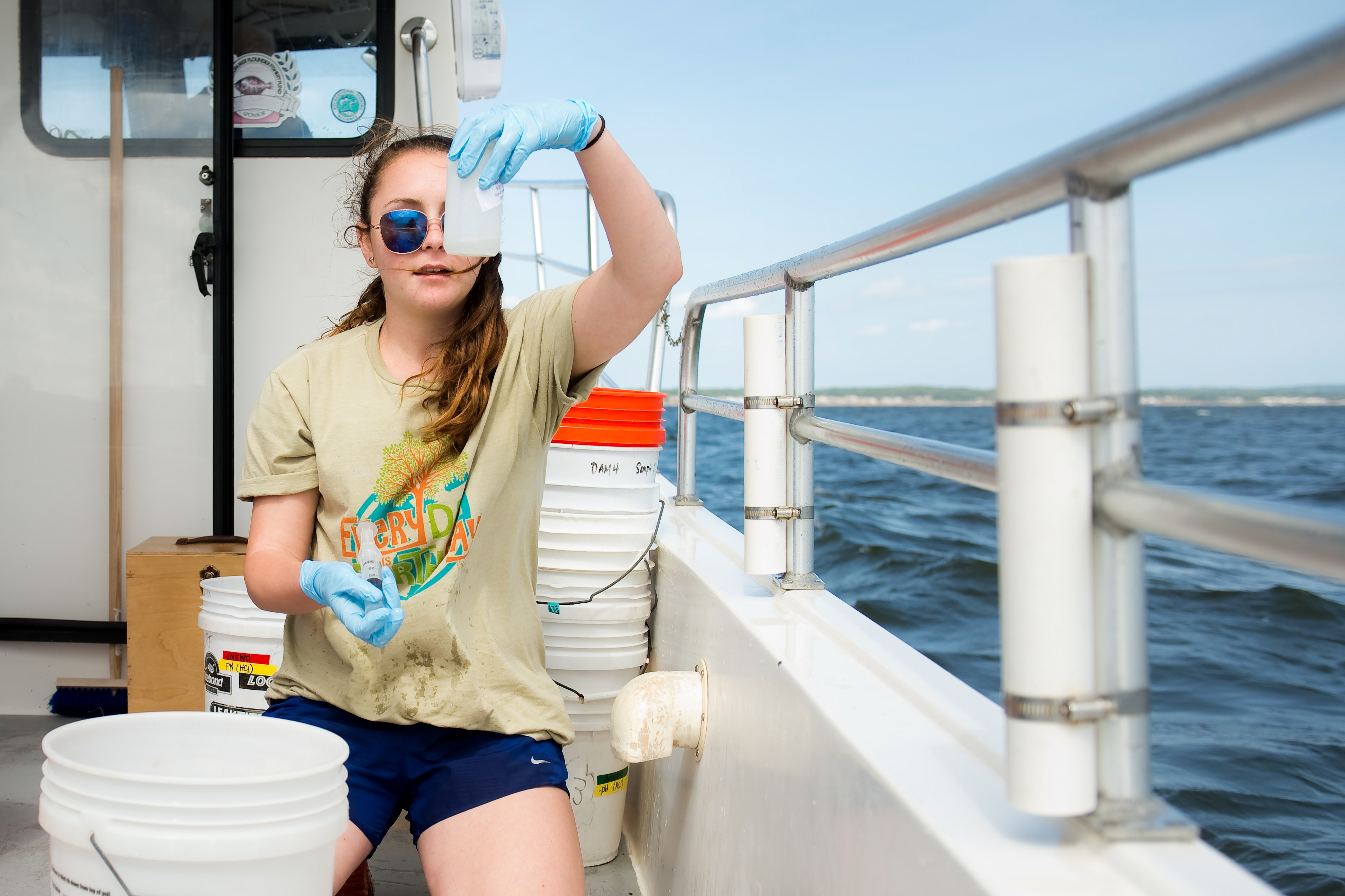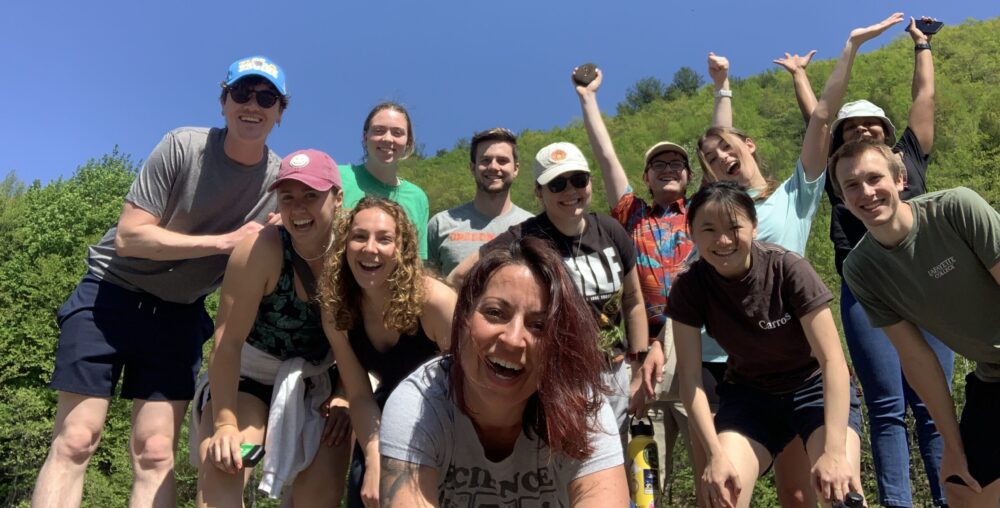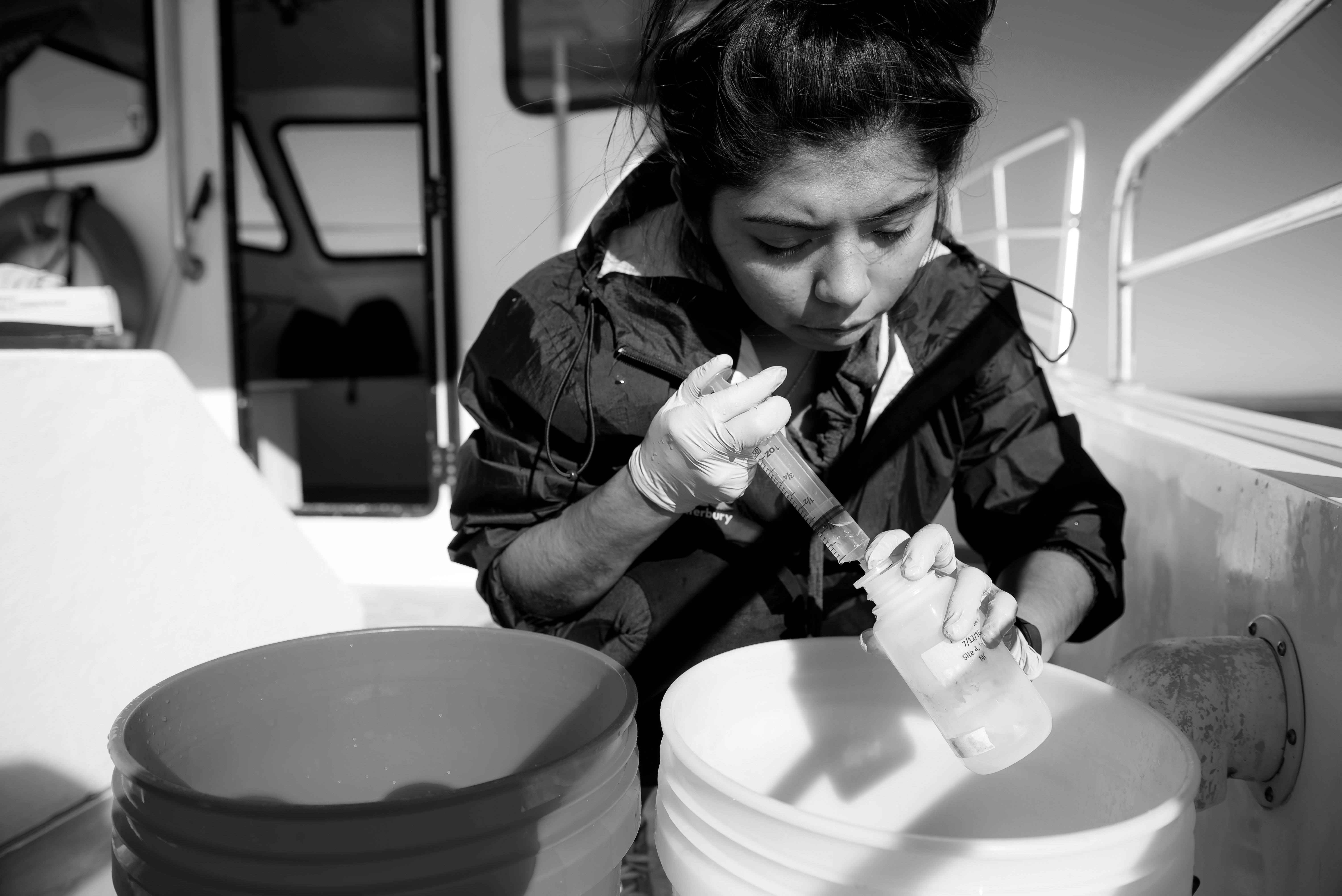
For his Honors Thesis, Austin Best ’22 employed molecular methods to characterize the microbial community and explore possible relationships between HAB species, bacterial taxa, and environmental parameters using multivariate statistics.
Raritan Bay has a long history of nutrient over-enrichment and associated harmful algal blooms (HABs). HABs occur when algae or phytoplankton reach very high densities while producing toxic or harmful effects on people or other organisms. Despite striking environmental alterations occurring in Raritan Bay, publications in the early 1960s were the last to report consecutive measurements of both water quality parameters and plankton species composition in this system. Therefore, we set out to assemble an environmental monitoring dataset at the same six sampling sites monitored in the 1960’s so that we could explore the following questions: 1) What is the current water quality of Raritan Bay, and how many potentially harmful algal species are present? and 2) What is the relationship among nutrients, secondary consumers, and algal bloom generation in this system? The COVID-19 pandemic kept us from sampling in 2020, but we monitored from 2021-2022 to collect 12 years of environmental data! In 2023, we made the decision to phase this project out to make room for exploration of some new ecological restoration projects closer to home.

Declan Winters ’23 and Evan Flint ’23 collect plankton from surface water. Evan, a Math and Environmental Science double major, made significant contributions to this project by using our long-term dataset to develop models that will aid in forecasting harmful algal blooms in this system.
We used this dataset to address the research questions I outlined above, and our results were published in the journal Estuaries & Coasts (Rothenberger et al. 2014). Now that we have collected 12 years of environmental data (i.e., an “official” long-term monitoring dataset), we are working with Dr. Trent Gaugler, our collaborator in the Department of Math, to use empirical modeling methods to explore trophic relationships and build predictions about HABs in this system. First, we used ecological network analysis (ENA) with the goal of exploring specific (i.e., species-species) biotic associations that may be influencing HAB development in the HRE. Ecological network analysis showed that there were far more associations between HAB species and biotic parameters (~95%) than abiotic parameters (~5%), suggesting that biotic associations play an underappreciated role in algal assemblage structure. These results were recently published in Harmful Algae (Rothenberger et al. 2023). Evan Flint ’23, Trent Gaugler, and I are now working on another project to develop a functional model with the ability to accurately and precisely predict blooms of Heterosigma akashiwo, a potentially harmful species that is abundant in the HRE. 
Sam Gleich ’17 investigated the interactive effects of nutrient enrichment and acidification on phytoplankton in Raritan Bay for her Honors Thesis in Biology.Analysis of the dataset also led to the generation of a number of hypotheses regarding environmental factors that are leading to the development of HABs in Raritan Bay. Our next step was to design a controlled experiment to test these hypotheses using microcosms. Microcosms are artificial, simplified ecosystems that can be used to predict the response of natural phytoplankton assemblages to specific actions under controlled conditions. The results of our first set of microcosm experiments are described in a manuscript published in the Journal of Experimental Marine Biology and Ecology (Rothenberger and Calomeni 2016), and we ran another microcosm experiment in September 2016 to investigate the interactive effects of nutrient enrichment and acidification on HAB species. Acidification refers the ongoing decrease in the pH of the world’s oceans, caused by the uptake of carbon dioxide from the atmosphere. New research suggests that nutrient over-enrichment may be exacerbating the effects of increased atmospheric carbon dioxide concentration on ocean acidification. Therefore, it’s important to explore the combined effects of these two human-induced pressures on plankton assemblages.

Erika Hernandez ’17, Ginny Hoyt ’16, Mia Spitz ’16, and I having a research chat on the way to one of our monitoring sites. For her Honors Thesis research, Mia Spitz studied the short and long-term impacts of Hurricane Sandy on water quality, plankton assemblages, fish landings, and the adaptive capacity of anglers.
The resilience and adaptive capacity of the Hudson-Raritan Bay was further challenged when Hurricane Sandy made landfall on October 29, 2012 at Brigantine, NJ. Power outages and coastal flooding took several water treatment plants offline in New Jersey, and raw sewage carrying high levels of fecal coliform bacteria, nutrients, and pollutants emptied into Raritan Bay. We recognize the importance of evaluating acute and long-term impacts of climate-related disturbance on both ecological and social systems. Therefore, we set out to evaluate the acute and long-term impacts of Hurricane Sandy on water quality, plankton, and fisheries landings and to use an interview-based approach to document adaptive response in the Raritan Bay fishing community. The results of this research was recently published in Ambio (Rothenberger et al. 2018).
LAB FAM members who have contributed to this project: Alyssa Calomeni ’11, Carolyn Cabrey ’12, Danielle Sobol ’12, Andrew Chun ’12, Tom Swaffield ’13, Leah Roberts (Hayden) ’15, Mia Spitz ’16, Samantha Gleich ’17, Austin Best ’22, and Evan Flint ’23.

